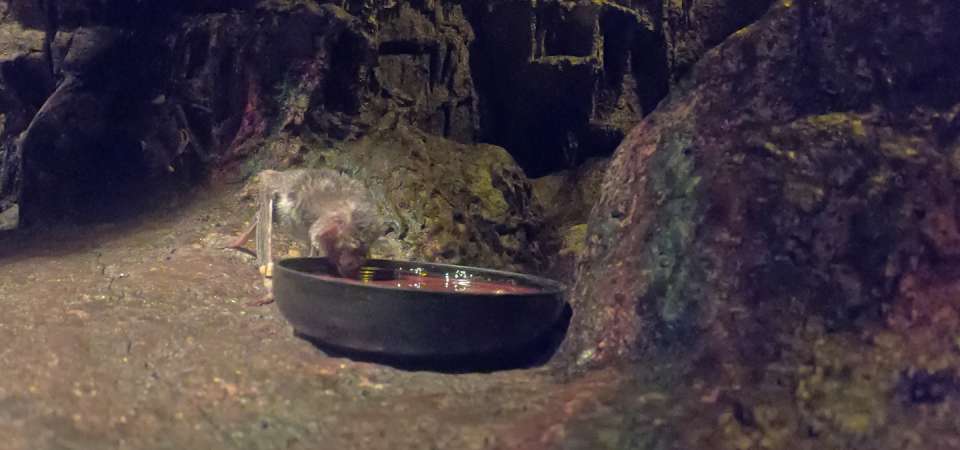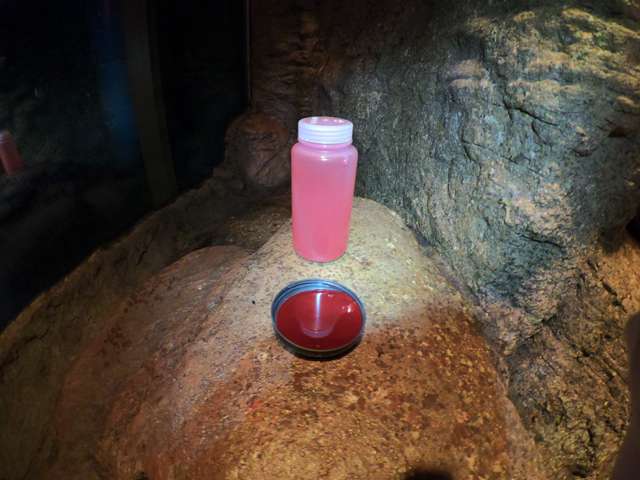
Sunny Weekend Alert
The Zoo anticipates high attendance on sunny weekends. Parking is limited, so arrive early, carpool, and check our site / social pages often for more updates!
The Zoo anticipates high attendance on sunny weekends. Parking is limited, so arrive early, carpool, and check our site / social pages often for more updates!

Bats are some of the most fascinating and misunderstood animals out there. At the North Carolina Zoo, we have the most unique and feared of all the bat species: common vampire bats!

Vampire bat
We have a colony of 34 individuals with ages ranging from 5 months old to 27 years old. That’s probably surprising since you’re usually lucky if you can find one when peering into their habitat. Here are some tips: stay awhile, let your eyes adjust, and look everywhere. Vampire bats are very small. They can fly, walk on the ground, or climb.
Their habitat is the first one in the nocturnal section of the Deserts of the World building, so it will be hard to see at first. Just give it time, and don’t use your phone flashlight! It will scare the bats away, and makes it harder for your eyes to adjust.
The lights in the habitat get dimmer as the day goes on to mimic a natural light cycle, so come to the Desert early for the best light!

Vampire bat habitat
To focus your eyes, look for the blood dishes, and go from there. That’s right, small dishes of blood for our vampire bats to eat. Vampire bats can only eat blood, and cow blood is what they prefer, even in the wild. “How do you feed your bats?” is the most frequently asked question, and the answer is pretty boring. We get the blood from a local meat processing plant. As they break down the meat for steaks and burgers, the blood is saved just for us. We go pick it up, put it into bottles, and then give it to the bats. Vampire bats have extremely fast metabolisms, and we want to make sure everyone has the chance to eat, so they have blood all the time. We change out the blood twice a day to prevent clotting.

Blood for vampire bats
One of the more difficult parts of taking care of vampire bats is checking on them every day. They love to squeeze into every nook and cranny of their cave, and it’s sometimes difficult to find them all. All of our bats have bands on their wings unique to them, which lets us know who is who. This is great when we need to focus on an individual, for example, a female with a newborn or an older bat who has trouble getting around. Vampire bats are sensitive to touch, so we don’t handle them unless necessary. And then very carefully with thick gloves; their teeth are very sharp!
Here at the Zoo, we encourage our bats just to be bats! If you stick around long enough, you will see them flying, climbing, walking, jumping, grooming each other, eating, and cuddling. Their cave environment is built to allow them to do all those things! Sometimes the habitat needs help with humidity levels. The desert building is designed to provide a low humidity environment that mimics arid habitats in the wild. That’s great for the other animals in the dome but vampire bats like it a little more humid. To fix that, we installed a misting system that goes off throughout the day. That keeps the humidity high and encourages the bats to fly through the mist if they choose. Some seem to like it more than others and will fly back and forth through the mist like little kids with a sprinkler!

Vampire bat colony
Bats are a vital part of the world’s ecosystem and are amazing. I hope you enjoyed this little insight into how we take care of our vampire bats. See you soon!